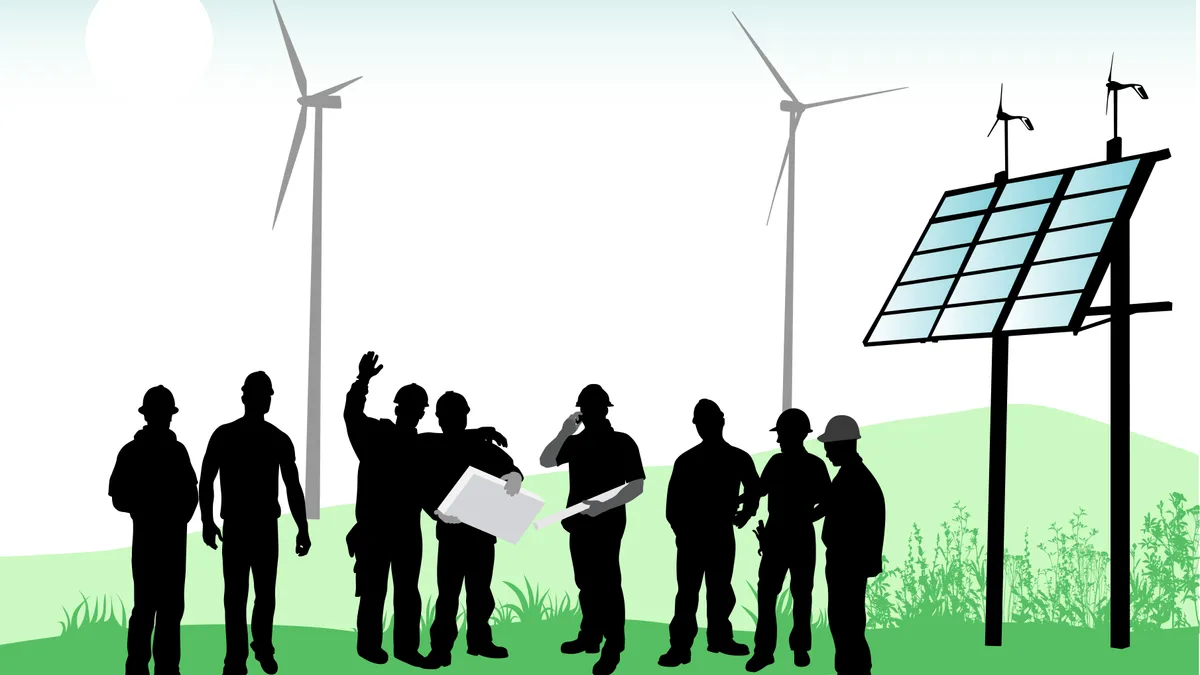Dive Brief:
-
The U.S. is currently on track to install 27 GW of new wind generation and 44 GW of solar in 2022, according to a 2022 Electric, Natural Gas and Water Utilities Outlook Report from S&P Global Market Intelligence.
-
Next year's solar installations will double the record capacity installed in 2021, according to S&P. Wind installations, appear to have plateaued for the time being at 27 GW per year. In addition, S&P anticipates the deployment of more than 8 GW of battery storage in 2022, six times higher than the record set in 2020.
-
However, the report's author, Adam Wilson, believes developments from recent weeks, including the passage of a bipartisan infrastructure package and growing supply chain constraints, may push back some projects slated for 2022.
Dive Insight:
One way or another, 2022 is set to be a monumental year for the renewable energy industry.
U.S. developers have plans to install 71 GW of wind and solar next year, plus an additional 8 GW of battery storage — potentially exceeding records on all fronts. About 40 GW of the wind and solar capacity expected to be installed in 2022 is contracted to non-utility offtakers, according to the S&P report.
But the rapidly changing political and economic landscape could prompt developers to reconsider their plans, according to Wilson, a renewables energy analyst for S&P Global Market Intelligence.
The estimates contained within the 2022 S&P outlook were calculated before two key developments: the passage of a bipartisan infrastructure bill extending wind and solar tax credits, and rapid increases in key raw material and shipping costs, Wilson said.
One of the primary reasons why the projections for 2022 were so high, Wilson said, is because developers were rushing to complete projects before federal tax credits began to phase down. However, over the course of this past year, growing supply chain challenges have made the goal of completing projects ahead of federal deadlines increasingly difficult. With the deadlines now extended and materials shortages still driving up prices, Wilson said he believes there is a good chance a portion of the projects slated for installation in 2022 will be delayed.
But even if the industry doesn't hit the 71 GW mark in 2022, Wilson said, he believes those projects will go on to contribute to new records in 2023 or 2024 at the latest.
"If 2022 isn't a record year, then 2023 and 2024 will be," he said. "With the dedication from both the federal administration and from the utilities and corporate buyers that are looking to be able to claim 100% renewable power, there's no way this market is going to be allowed to backtrack. There's too much momentum pushing it forward. Even though there are headwinds, the drivers vastly outweigh the hurdles that the industry is facing."













